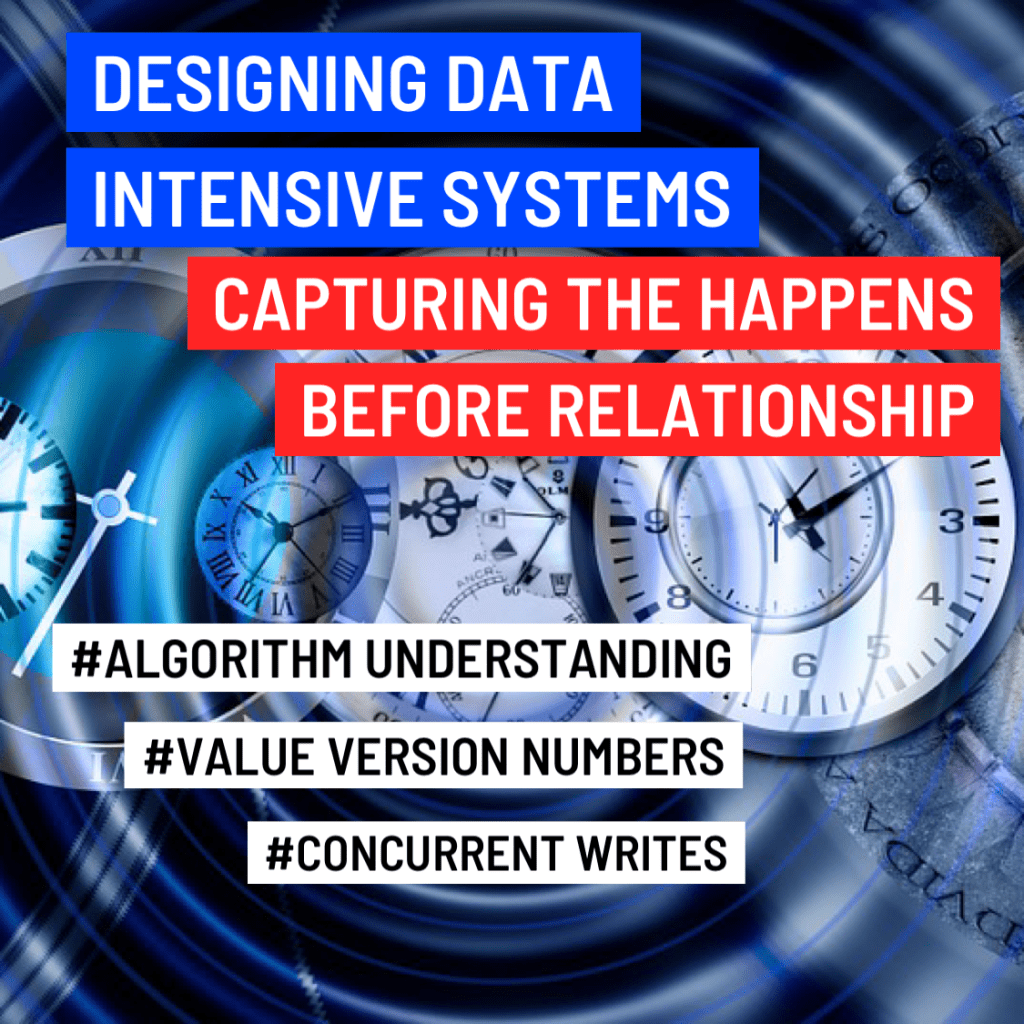In this post, we will delve into an algorithm that can tell whether two operations are concurrent or whether one happened before another.
Scenario
Let’s begin with a database with only one replica. (so we can simplify this and thereafter generalise the approach to a leaderless database with multiple replicas)
- Say we have two clients concurrently adding items to the same shopping cart
- (If this example is too mundane, let’s imagine two air traffic controllers) ✈️
- Initially the cart is empty between them
- The clients make 5 writes to the database
- Client 1 adds milk to the cart
- This is the first write to that key so the server successfully stores and assigns it version 1
- The server also echos the value back to the client the version number
- Client 2 adds eggs to the cart
- Not knowing that client 1 concurrently added milk
- And so client 2 only thinks there is eggs in the cart
- The server assigns version 2 to this write
- And assigns eggs and milk as two separate values
- It then returns both values to the client along with the version number of 2
- Client 1 is oblivious to client 2 write, and want to add flour to the cart
- So it thinks its current cart contents should be milk and flour
- It then sends this value to the server along with the version number 1
- That the server gave client 1 previously
- The server can tell from the version number that the write of milk and flour, super-seeds the prior value of milk
- But this is concurrent with eggs
- Thus the server assigns version 3 to milk and flour
- Overrides the version 1 value milk
- But keeps the version 2 value
- And returns both remaining values to the client
- Meanwhile client 2 wants to add ham to the cart
- Unaware client 1 has added flour
- Client 2 received two separate values milk and eggs from the server in the last response
- So the client now merges those values and adds ham to form a new value
- New value: (eggs, milk and ham)
- It sends that value to the server along with the previous version number 2
- The server detects that version 2 overrides eggs
- But it is concurrent with milk and flour
- So the two remaining values are:
- Milk and flour with version 3
- Eggs, milk and ham version 4
- Finally client 1 wants to add bacon
- It previously received two values, milk and flour and separately eggs from the server at version 3
- So it merges those, adds bacon and sends the final value of milk, flour eggs and bacon to the server
- Along with the version number 3
- This overrides milk and flour
- Eggs was already overwritten in the last step
- But it is concurrent with eggs milk and ham
- So the server keeps those two concurrent values
- (If this example is too mundane, let’s imagine two air traffic controllers) ✈️
What just happend?
In this example above, the clients are never fully up to date with the data on the server.
- This is because there is always another operation going on concurrently
- But old value versions of the value do get overwritten eventually and no writes are lost
- ⚠️ Note – that the server can determine whether two operations are concurrent or not by looking at the version numbers
- It does not need to interpret the value itself (so the value can be any data structure)
What does the algorithm look like?
- The server maintains the version number for every key
- Increments the version number each time that the key is written
- And stores the new version number along with the new value written
- When a client reads a key:
- The client returns all values that have not been overwritten, also the latest version number
- Client must read a key before a write
- When a client writes a key it must include a version number of the prior read
- And it must merge together all values that were received in the prior read
- The response for a write request can be like a read returning all current values
- Which allows us to chain several writes like in a shopping cart example
- When a server receives a write for a particular version number
- It can overwrite all values with that version number or below…
- This is because it knows it has been merged into the new value
- But it must keep all version numbers with higher value, because those values are concurrent with the incoming write
- It can overwrite all values with that version number or below…
- When a write includes a version number from the prior read, this tells us which previous state a write is based on
- If you make a write without including a version numberit is concurrent with all other writes
- So it will not overwrite anything so it will just be returned as the values from subsequent reads
📚 Further Reading & Related Topics
If you’re exploring capturing the “happens-before” relationship in data-intensive systems, these related articles will provide deeper insights:
• Distributed Data-Intensive Systems: The Happened-Before Relationship and Concurrency – Learn the fundamentals of how distributed systems track event ordering and maintain consistency.
• Distributed Data-Intensive Systems: Reading and Writing Quorums – Explore how quorum-based approaches influence consistency and ordering in distributed environments.









Leave a comment